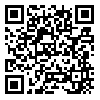BibTeX | RIS | EndNote | Medlars | ProCite | Reference Manager | RefWorks
Send citation to:
URL: http://unmf.umsu.ac.ir/article-1-5372-en.html
2- Department of Nursing, Faculty of Medical Sciences, Urmia Branch, Islamic Azad University, Urmia, Iran ,
3- Department of Midwifery, Faculty of Medical Sciences, Urmia Branch, Islamic Azad University, Urmia, Iran
Background & Aims: In medical universities, the hidden curriculum "significantly impacts clinical education environments and plays a crucial role in students' learning due to its considerable stability and permanence. This study aimed to compare the hidden curriculum status of nursing students in public, private, and social security hospitals.
Materials & Methods: This descriptive-analytical cross-sectional study was conducted on 150 nursing students at Urmia Azad University in 2024. Participants were selected from nursing students in internships in public, social security, and private hospitals. Data were collected using demographic information questionnaires and the Hidden Curriculum Evaluation Scale in nursing education through self-reporting, and analyzed with SPSS v.23 software and independent t-tests and one-way analysis of variance.
Results: The results revealed a significant relationship between the hidden curriculum and the level of satisfaction with the nursing program, the level of motivation and interest in choosing the field of nursing, and marital status (p<0.05). Also, the difference in the mean scores of hidden curriculums was significant in the comparison of the hospitals studied (p=0.030, F=3.585), with private hospitals showing higher scores than public and social security hospitals (p<0.05).
Conclusion: Nursing students perceived the hidden curriculum in private hospitals to be better compared to public and social security hospitals. Potential reasons could be the smaller number of students in these hospitals and the opportunity to learn more and establish better relationships with patients and their families, nurses and doctors. Hospital administrators prioritizing attention to the hidden curriculum can make the hospital environment flexible and help students' creativity and educational innovation.
| Rights and permissions | |
 |
This work is licensed under a Creative Commons Attribution-NonCommercial 4.0 International License. |







 gmail.com, unmf
gmail.com, unmf